"One man's terrorist is another man's freedom fighter"
1788
The 11 ships of the First Fleet left Portsmouth, England, in 1787, with more than 1480 men, women and children on board. They arrived at Botany Bay on 18 January 1788, after a journey of approximately 20,000 kilometres.
Governor Arthur Phillip decided that Botany Bay was an unsuitable settlement place because the area appeared to have poor soil, no reliable fresh drinking water, and the bay was too shallow to allow the ships to anchor close to the shore.
On 26 January 1788, Captain Arthur Phillip and the 11 ships of the First Fleet sailed into Port Jackson and planted the British flag to proclaim the colony of New South Wales.
On 11 February, convict Thomas Eccles becomes the first person to be tried in the new colony for drunkenness. And Thomas Barrett is the first person hanged on the 27th February.
1789
On 26 January 1788, Captain Arthur Phillip and the 11 ships of the First Fleet sailed into Port Jackson and planted the British flag to proclaim the colony of New South Wales.
On 11 February, convict Thomas Eccles becomes the first person to be tried in the new colony for drunkenness. And Thomas Barrett is the first person hanged on the 27th February.
 |
| The First Fleet entering Port Jackson on 26 January 1788 by Edmund Le Bihan |
The Night Watch and the Row Boat Guard were appointed by Governor Phillip from amongst the best-behaved convicts. Their major task was to prevent stealing and convicts trying to escape the colony by stowing-away on ships.
John Black Caesar (c.1763-1796), a convict and bushranger of African background, who had been living in Deptford, England, was transported on the First Fleet to Australia for theft. After being sentenced to a second term of transportation, this time to life, Black Caesar became Australia's first bushranger in 1789. In the following year, Caesar escaped from his chains various times. He robbed settlers and attacked Aboriginal people.
The mutiny on the Royal Navy vessel HMS Bounty occurred in the south Pacific on 28 April 1789, under the command of Captain Bligh. Fletcher Christian and other crewmen seized control of the ship and set Bligh and 18 loyalists adrift in the ship's open boat.
Luke Haines/Haynes was one of six Marines hanged at Sydney Cove for theft of government stores, 27 March 1789.
Ann Davis (alias Judith Jones) was the first woman hanged in Australia, 23 November 1789.
1822
20 September 1822 – Alexander Pearce, Bob Greenhill, and six others escaped from Macquarie Harbour Penal Station. Pearce and Greenhill later killed their fellow escapees and ate them. It was reported that just before he was hanged, Pearce said, "Man’s flesh is delicious. It tastes far better than fish or pork.''
1826
1827
On 27 October 1827, many of the women of the Parramatta Female Factory reacting to the lack of food and bad management, rioted, wielding pick-axes, storming the gates and pouring onto the streets of Parramatta like "Amazonian banditti". The first industrial action by women in Australia.
1834
Ten Australian convicts hijacked the brig, Frederick, and sailed to Chile, where they lived freely for two years. Four of the convicts were later recaptured and returned to Australia, where they escaped the death sentence for piracy through a legal technicality.
1835
The Proclamation by Governor Bourke of terra nullius, upon which British settlement is based, 10 October 1835.
 |
| The mutineers turning Lt Bligh and some of the officers and crew adrift from His Majesty's Ship HMS Bounty. By Robert Dodd, National Maritime Museum |
Ann Davis (alias Judith Jones) was the first woman hanged in Australia, 23 November 1789.
1790
The Night Watch, also drawn from convict ranks, were replaced by the Sydney Foot Police in 1790.
In December 1790, Pemulwuy, the Aboriginal warrior, speared John McIntyre, Governor Phillip's gamekeeper, who later died of from the injury.
The Night Watch, also drawn from convict ranks, were replaced by the Sydney Foot Police in 1790.
In December 1790, Pemulwuy, the Aboriginal warrior, speared John McIntyre, Governor Phillip's gamekeeper, who later died of from the injury.
1791
Mary Bryant (1765 –1794) was a Cornish-highway woman and convict who was transported to Australia for her crimes. She became one of the first successful escapees from the Australian penal colony. Along with her husband, William, and her children, Charlotte and Emmanuel.
Mary stole a boat from Governor Phillip and sailed to Kupang, in West Timor, a journey of 3,000 miles, taking sixty-nine days, without navigational equipment. Instead of facing the gallows, a famous lawyer took up the case, and Mary was granted a pardon in 1793, after a year in prison.
1795
In 1795, Black Caesar and other convicts were attacked by a group of Aboriginals, who included the warrior, Pemulwuy. Caesar retaliated and cracked Pemulwuy’s skull, wounding him up to seven times.
1796
Bushranger Black Caesar was shot, captured and killed in 1796.
A group of convicts were arrested for passing a forged ten guinea note bearing the Commissary's name. Convict, James McCarthy was sentenced to death for the crime, but most of the rest of the group were acquitted. In the end, McCarthy's life was also, spared, and he was sent to Norfolk Island.
1801
Colonel Paterson and British army officer, John Macarthur, became involved in a quarrel after Macarthur disclosed information contained in a private letter written by Mrs Paterson to Mrs Elizabeth Macarthur. Paterson then challenged Macarthur to a duel, and Paterson was wounded in the shoulder. John Macarthur was sent back to England under arrest.
1803
Constable Joseph Luker, who had arrived in Sydney as a convict on the Third Fleet in 1791, was the first police officer killed in the line of duty in New South Wales.
1805
Many forged English and Irish bank notes were circulating in Sydney during May 1805.
1807
William Bligh, fourth Governor of New South Wales, communicated his policy to the Colonial Office banning all forms of barter using spirits and outlawed illegal stills.
1808
The Rum Rebellion of 1808, involved the overthrow of Governor William Bligh by the New South Wales Corps. This uprising is the only successful armed takeover of government in Australian history.
1810
In January, Governor Macquarie forbade work on Sundays and directed that police constables of the colony should place anyone found working on this day before a magistrate. Public houses were also ordered to be closed during the time in which church services occurred.
1816
The Appin Massacre occurred on April 17, 1816, after a period of land hostilities between the settlers and Aboriginal people. The 46th Regiment, led by Captain James Wallis, shot and killed about 14 Aboriginals, while other Aboriginal people ran “in despair over the precipice” and fell into the the Cataract River. The orders for the massacre came from Governor Lachlan Macquarie, who directed the reprisal raid to be carried out with "secrecy and dispatch".
1795
In 1795, Black Caesar and other convicts were attacked by a group of Aboriginals, who included the warrior, Pemulwuy. Caesar retaliated and cracked Pemulwuy’s skull, wounding him up to seven times.
1796
Bushranger Black Caesar was shot, captured and killed in 1796.
Convicts in the NSW colony were either selling or gambling away their clothes, then stealing clothing from others, to replace their own clothes.
Colonel Paterson and British army officer, John Macarthur, became involved in a quarrel after Macarthur disclosed information contained in a private letter written by Mrs Paterson to Mrs Elizabeth Macarthur. Paterson then challenged Macarthur to a duel, and Paterson was wounded in the shoulder. John Macarthur was sent back to England under arrest.
The penal settlement at Newcastle was established and the town soon gained a reputation as a "hellhole", where the most dangerous convicts were sent to mine coal and burn lime.
1802
Aboriginal warrior, Pemulwuy, was ambushed, shot and decapitated. His head was sent to Sir Joseph Banks back in England, preserved in a barrel of spirits.
1802
Aboriginal warrior, Pemulwuy, was ambushed, shot and decapitated. His head was sent to Sir Joseph Banks back in England, preserved in a barrel of spirits.
Constable Joseph Luker, who had arrived in Sydney as a convict on the Third Fleet in 1791, was the first police officer killed in the line of duty in New South Wales.
Constable Luker was investigating a robbery when a group of criminals attacked him with a desk they were stealing. He was bashed with the frame of a wheelbarrow and stabbed with his own cutlass guard. Constable Luker’s grave, in the Old Sydney Burial Ground, was marked “assassinated“.
Joseph Samuels was one of those who were convicted of Constable Luker's murder and sentenced to hang. However, three attempts were made to hang him and all were unsuccessful. He was given a reprieve.
Joseph Samuels was one of those who were convicted of Constable Luker's murder and sentenced to hang. However, three attempts were made to hang him and all were unsuccessful. He was given a reprieve.
1804
The Castle Hill Rebellion of 1804 was Australia’s first uprising. More than 100 people died during the week of battle, when Irish convicts attempted to overthrow British rule in New South Wales, so, that they could return to Ireland and overthrow the British there.
The Castle Hill Rebellion of 1804 was Australia’s first uprising. More than 100 people died during the week of battle, when Irish convicts attempted to overthrow British rule in New South Wales, so, that they could return to Ireland and overthrow the British there.
An uprising was stopped in December on Norfolk Island by the execution of two leaders of the rebellion.
1805
Many forged English and Irish bank notes were circulating in Sydney during May 1805.
1807
William Bligh, fourth Governor of New South Wales, communicated his policy to the Colonial Office banning all forms of barter using spirits and outlawed illegal stills.
1808
The Rum Rebellion of 1808, involved the overthrow of Governor William Bligh by the New South Wales Corps. This uprising is the only successful armed takeover of government in Australian history.
 |
| A propaganda cartoon created within hours of William Bligh's arrest, portraying him as a coward |
In January, Governor Macquarie forbade work on Sundays and directed that police constables of the colony should place anyone found working on this day before a magistrate. Public houses were also ordered to be closed during the time in which church services occurred.
1816
The Appin Massacre occurred on April 17, 1816, after a period of land hostilities between the settlers and Aboriginal people. The 46th Regiment, led by Captain James Wallis, shot and killed about 14 Aboriginals, while other Aboriginal people ran “in despair over the precipice” and fell into the the Cataract River. The orders for the massacre came from Governor Lachlan Macquarie, who directed the reprisal raid to be carried out with "secrecy and dispatch".
1817
A great many hangings occurred in the colony for both small and large crimes.
Patrick Ducey was hanged in Sydney for stealing a cow, the property of Patrick Devoy, 7 November 1817.20 September 1822 – Alexander Pearce, Bob Greenhill, and six others escaped from Macquarie Harbour Penal Station. Pearce and Greenhill later killed their fellow escapees and ate them. It was reported that just before he was hanged, Pearce said, "Man’s flesh is delicious. It tastes far better than fish or pork.''
 |
| Black and white photo of the skull of Alexander Pearce, which is held in the University of Pennsylvania, Philadelphia. State Library of Tasmania |
Matthew Brady (1799-1826) was sent to Australia as a convict for stealing a basket and some butter, bacon, sugar and rice. Whilst in the colony, Brady received 350 lashes for various punishments. Matthew Brady became a notorious bushranger in Van Diemen's Land and was known as the “Gentleman Bushranger”, as he generally only used violence in self-defence. When Matthew Brady was sentenced to be hanged in May 1826, court proceedings were interrupted by many weeping women.
On 27 October 1827, many of the women of the Parramatta Female Factory reacting to the lack of food and bad management, rioted, wielding pick-axes, storming the gates and pouring onto the streets of Parramatta like "Amazonian banditti". The first industrial action by women in Australia.
1828
Australia's first bank robbery occurred in Sydney in 1828 and most of the £14,000 was never found.
Australia's first bank robbery occurred in Sydney in 1828 and most of the £14,000 was never found.
On the 10th February 1828, the Cape Grim massacre occurred, when four shepherds with muskets ambushed over 30 Tasmanian Aboriginal people from Cape Grim, killing 30 and throwing their bodies over a 60-metre cliff into the sea.
1830
Mary McLauchlan was the first woman to be executed in Van Diemen's Land, after being found guilty of infanticide and sentenced to death.
1829
In 1829, the New South Wales Supreme Court advised the Attorney-General that it would be unjust to apply English law to the killing of an Aboriginal person by members of another tribe.[15
In 1829, the New South Wales Supreme Court advised the Attorney-General that it would be unjust to apply English law to the killing of an Aboriginal person by members of another tribe.[15
Mary McLauchlan was the first woman to be executed in Van Diemen's Land, after being found guilty of infanticide and sentenced to death.
1831
On July 11, the Aboriginal resistance fighter Yagan was shot and killed. His head was taken as proof of his death, and his body was transported to England and buried in the Liverpool Cemetery, with the bodies of stillborn babies. His head is now secretly buried in Perth, in the Swan Valley.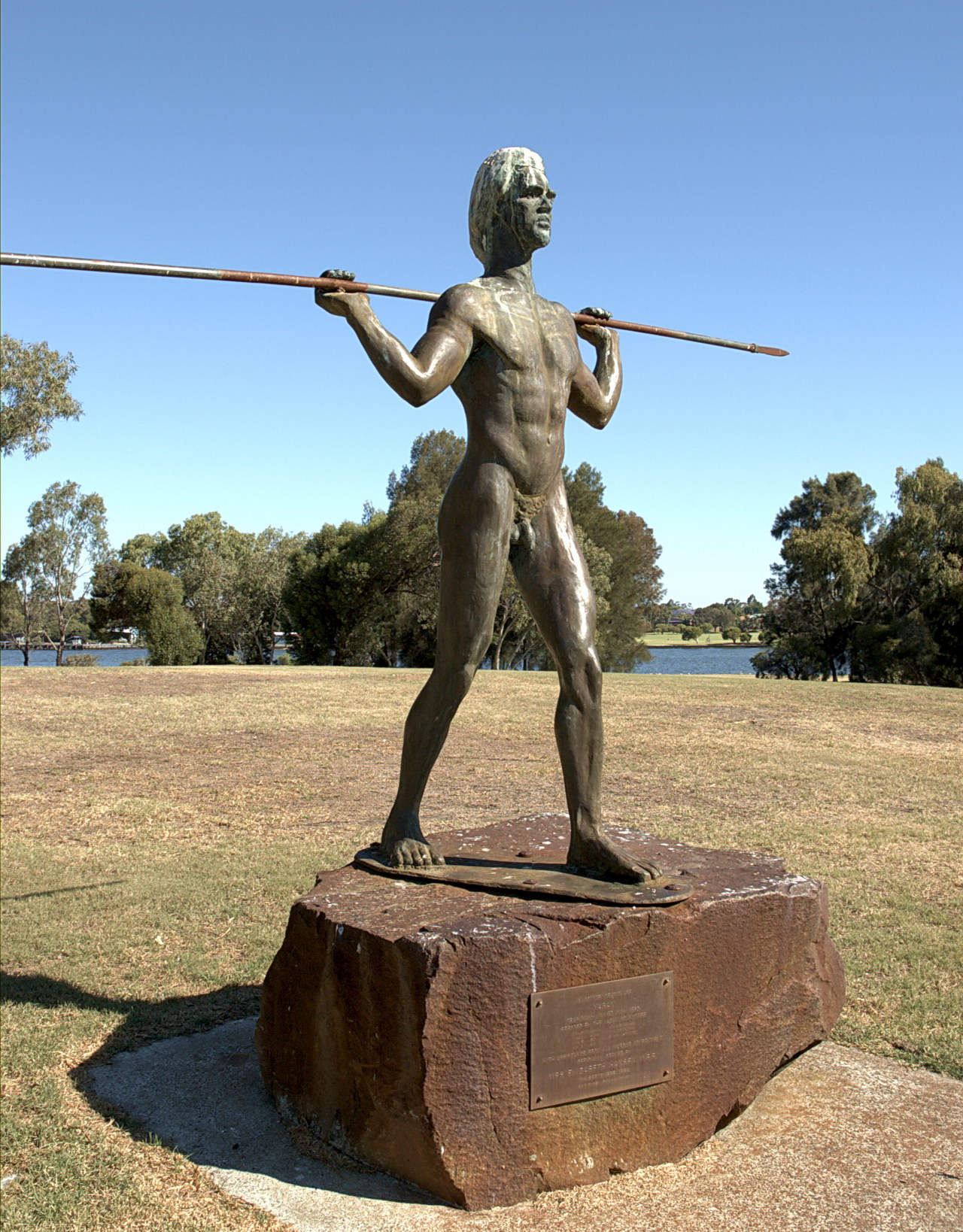 |
| Yagan statue. Heirisson Island, Perth, Western Australia. The statue was sculpted in 1984 by Robert Hitchcock |
Ten Australian convicts hijacked the brig, Frederick, and sailed to Chile, where they lived freely for two years. Four of the convicts were later recaptured and returned to Australia, where they escaped the death sentence for piracy through a legal technicality.
The Proclamation by Governor Bourke of terra nullius, upon which British settlement is based, 10 October 1835.
[In the eighteenth century, the three recognised ways of acquiring legal sovereignty were by conquest, cession or occupation of land that was ownerless. The American colonies were mainly acquired by conquest or cession, but in 1770, Australia was regarded as "common land" occupied only by "wandering tribes".
Politicians at the time were strongly influenced by the 1690 doctrine of John Locke that: As much land as a man tills, plants, improves, cultivates, and can use the product of, so much is his property. He by his labour does, as it were, inclose it from the Common.] Read here
Politicians at the time were strongly influenced by the 1690 doctrine of John Locke that: As much land as a man tills, plants, improves, cultivates, and can use the product of, so much is his property. He by his labour does, as it were, inclose it from the Common.] Read here
1836
On Monday mornings, people who had been found drunk and rolling about the streets over the weekend, would stand trial at the Barracks Bench. Punishments would include solitary confinement, working in leg-irons or spending days on the treadmill, grinding grain.
1838
Up to 30 Aboriginal people were slaughtered at Myall Creek in northern New South Wales. After two trials, seven of the 11 colonists involved in the killings were found guilty of murder and hanged.
Whilst being lectured on morality by a visiting preacher at the Cascades Female Factory, South Hobart, witness recorded that: "The three hundred women turned right around and at one impulse pulled up their clothes showing their naked posteriors which they simultaneously smacked with their hands making a loud and not very musical noise".
1840
The sailing ship, Maria, left Port Adelaide on 26th June for a voyage to Hobart with 25 passengers and a baby. The Maria was wrecked off Cape Jaffa but the passengers and crew managed to escape in a small boat unharmed.
They began to walk back to Encounter Bay along the Coorong. The group never arrived. Newspapers reported that "a massacre site" had been found and those who went to investigate found "legs, arms and parts of bodies partially covered with sand and strewn in all directions". On August 25, two Aboriginal men were hanged from she-oak trees near the graves of their alleged victims.
1841
Edward Davis (1816–1841) was a convict who became a bushranger. He was Australia's only known Jewish bushranger, who roamed NSW, with a gang of escaped convicts and gained a Robin Hood-like reputation. He was hanged on 16 March 1841.
1857
The Hornet Bank massacre of eleven British colonists (seven members of the Fraser family, including a woman and five of her children) and one Aboriginal person, occurred at about one or two o'clock in the morning of 27 October 1857, at Hornet Bank station in central Queensland. Approximately 300 Aborigines were shot in retaliation. There are claims that Poisoned food had been given to the Yeeman tribe, resulting in the death of many members.
1841
Edward Davis (1816–1841) was a convict who became a bushranger. He was Australia's only known Jewish bushranger, who roamed NSW, with a gang of escaped convicts and gained a Robin Hood-like reputation. He was hanged on 16 March 1841.
1842
The Melbourne Police existed alongside a Native Police Corps, formed in 1842. Although the first constables were all dismissed for drunkenness. (see here)
1844
Martin Cash (1808-1877) was born in Wexford, Ireland, and transported to Australia for housebreaking. After becoming involved in cattle duffing in the Hunter Valley, he was sent to Van Diemen's land and was again convicted, this time of larceny.
Martin Cash (1808-1877) was born in Wexford, Ireland, and transported to Australia for housebreaking. After becoming involved in cattle duffing in the Hunter Valley, he was sent to Van Diemen's land and was again convicted, this time of larceny.
Cash escaped three times and turned to bushranging, but avoiding unnecessary violence. On a visit to Hobart Town, he was captured and sent to Norfolk Island in 1844, where he became a hat-maker. A sensational version of his story was published in Hobart in 1870.
John Graham Knatchbull (1793 –1844), the son of Sir Edward Knatchbull, 8th Baronet of Mersham Hatch, was an English naval captain and convict, who was found guilty of murder in 1844.
 |
| Martin Cash (baptised 10 October 1808 – 26 August 1877) was a notorious convict bushranger |
On the way to Norfolk Island, Knatchbull conspired with other convicts to poison the ship's crews and guards' food with arsenic. Then, as a prisoner on Norfolk Island, he escaped punishment for being part of a planned mutiny by informing on his fellow mutineers.
After returning to Sydney in 1839, he murdered shopkeeper, Ellen Jamieson, with a tomahawk and stole her money to pay for his wedding. Knatchbull's defence was conducted by Robert Lowe, later Viscount Sherbrooke, who made a plea of moral insanity (unsuccessfully). Knatchbull's hanging took place on 13 February 1844, at Taylor Square, Sydney, witnessed by 10,000 people.
Victoria's specialised Detective Force was founded in 1844. Detectives formed networks of informers, known as "fizzgigs", from among the associates of ex-convicts.
1851
1852
In 1852, the Nelson, a ship containing cash and gold nuggets, was robbed at gunpoint by a band of 20 armed robbers, while she was anchored at Hobsons Bay, off Melbourne.
1854
Eureka Stockade rebellion took place on December 3, when gold prospectors in Ballarat, Victoria, seeking various reforms, such as the abolition of mining licenses, clashed with government forces. This led to the death of 22 miners and 6 soldiers. The riot was an important development toward economic justice, political representation and social reform, brought about by collective action.
1846
Major Joseph Childs became the commandant of the convict prison at Norfolk Island in 1844 and began a regime of harsh, rigid discipline that ended with mutiny, massacre and the execution of 12 men.The convict rebellion, known as the Cooking Pot Riot, was led by William "Jackey Jackey" Westwood, a bushranger, who had been sent to Norfolk Island. The riot was sparked after a proclamation that food was to be served in bulk, that no personal cooking was to be permitted, and that kettles and saucepans held by prisoners were to be handed in.
 |
| Death mask of bushranger William Westwood, also known as Jackey Jackey. State Library of New South Wales |
HM Prison Pentridge was built in 1851. The gravesite of bushranger Ned Kelly, who was executed by hanging at the Melbourne Gaol in 1880, was once found within the walls of Pentridge. However, in 2011, Ned Kelly's remains, which did not include most of his skull, were exhumed and returned to his surviving descendants.
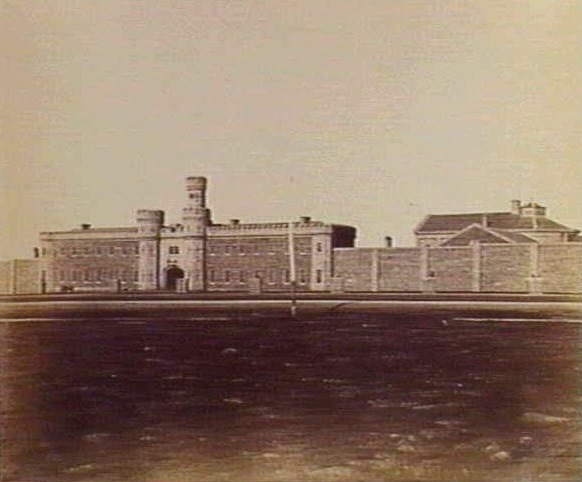 |
| Entrance of Pentridge gaol circa 1861. State Library of Victoria |
In 1852, the Nelson, a ship containing cash and gold nuggets, was robbed at gunpoint by a band of 20 armed robbers, while she was anchored at Hobsons Bay, off Melbourne.
1854
Eureka Stockade rebellion took place on December 3, when gold prospectors in Ballarat, Victoria, seeking various reforms, such as the abolition of mining licenses, clashed with government forces. This led to the death of 22 miners and 6 soldiers. The riot was an important development toward economic justice, political representation and social reform, brought about by collective action.
The Hornet Bank massacre of eleven British colonists (seven members of the Fraser family, including a woman and five of her children) and one Aboriginal person, occurred at about one or two o'clock in the morning of 27 October 1857, at Hornet Bank station in central Queensland. Approximately 300 Aborigines were shot in retaliation. There are claims that Poisoned food had been given to the Yeeman tribe, resulting in the death of many members.
 |
| Sketch of the retaliation after the Hornet Bank Massacre, 1925 |
1861
Anti-Chinese riots occurred at the Lambing Flat camps (around the present-day town of Young) over 10 months, between 1860 and 1861, as European miners were incensed by increasing Chinese presence on the goldfields. They cried: "Come on and let us drive the long tailed devils off at once". Europeans were said to be concerned that most of the Chinese were "idol-worshippers". Their differences in dress and language and the Chinese mining methods involved wastage of water, which was in short supply. The Lambing Flat riots went on for weeks and involved terrible levels of violence.
The Cullin-la-ringo massacre or Wills Tragedy occurred in Central Queensland on 17 October 1861, when about 50 Aboriginal people attacked men, women and children with nulla nullas, killing about 25. Terrible reprisal attacks ensued.
1867
A Commonwealth of Thieves: The Improbable Birth of Australia, by Thomas Keneally.
Banished Beyond The Seas, by Sue Cox
1865
The notorious Bushranger "Mad Dog Morgan", born in Campbelltown NSW, was regarded as "the most bloodthirsty ruffian that ever took to the bush in Australia". His killing spree ended 9 April 1865, when he was shot in the back by stockman, Jack Quinlan. Police Superintendent Cobham took Morgan's body to Wangaratta and put it on display. Dr Henry, of Benalla, cut off Morgan’s head and sent it to Professor George Halford at Melbourne University for examination.  |
| Morgan, shot and killed at Peechelba Station, State Library of Victoria |
The Clarke brothers, Australian bushrangers from the Braidwood district of NSW, have been described as the most bloodthirsty bushrangers of all. They were responsible for about 71 robberies and hold-ups and the death of at least one policeman. At their trial in 1867, Chief Justice of New South Wales, Sir Alfred Stephen, stated that the Clarkes were to be hanged, not as retribution, but because their deaths were necessary for the peace, good order, safety and welfare of society.
1868
The last convict ship left Britain in 1867 and arrived in Western Australia on 10 January 1868. All together, about 164,000 convicts were transported to the Australian colonies between 1788 and 1868, on board 806 ships.
Fled, by Meg Keneally an epic historical adventure based on the life of Mary Bryant.
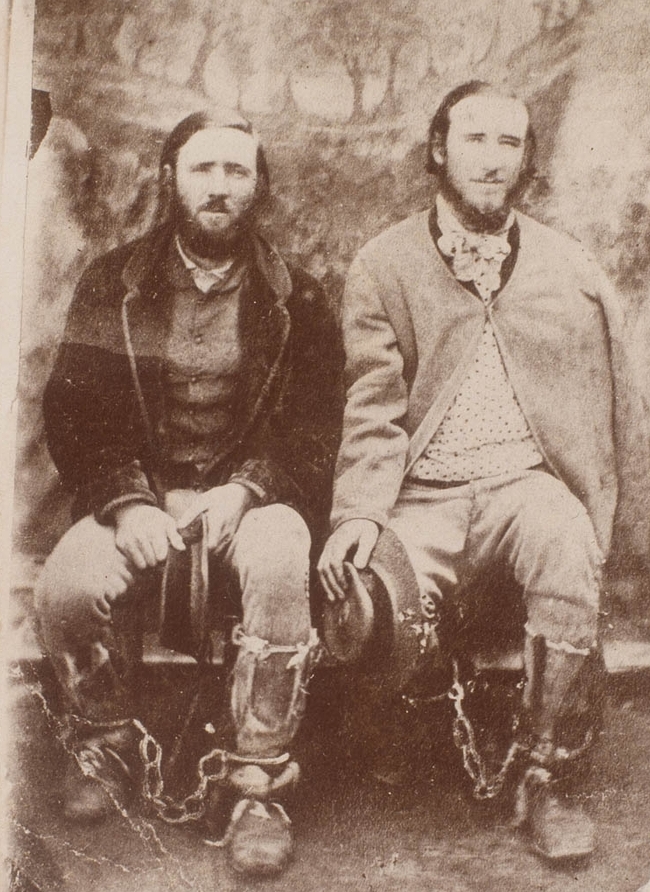 |
| The Clarke brothers apprehended in Braidwood Jail, May 1867. Thomas (right) is shot in the arm. |
The last convict ship left Britain in 1867 and arrived in Western Australia on 10 January 1868. All together, about 164,000 convicts were transported to the Australian colonies between 1788 and 1868, on board 806 ships.
Books To Read
Forgotten War, by historian Henry Reynolds



















Experiment_Farm_Cottage_107.jpg)










.jpg)

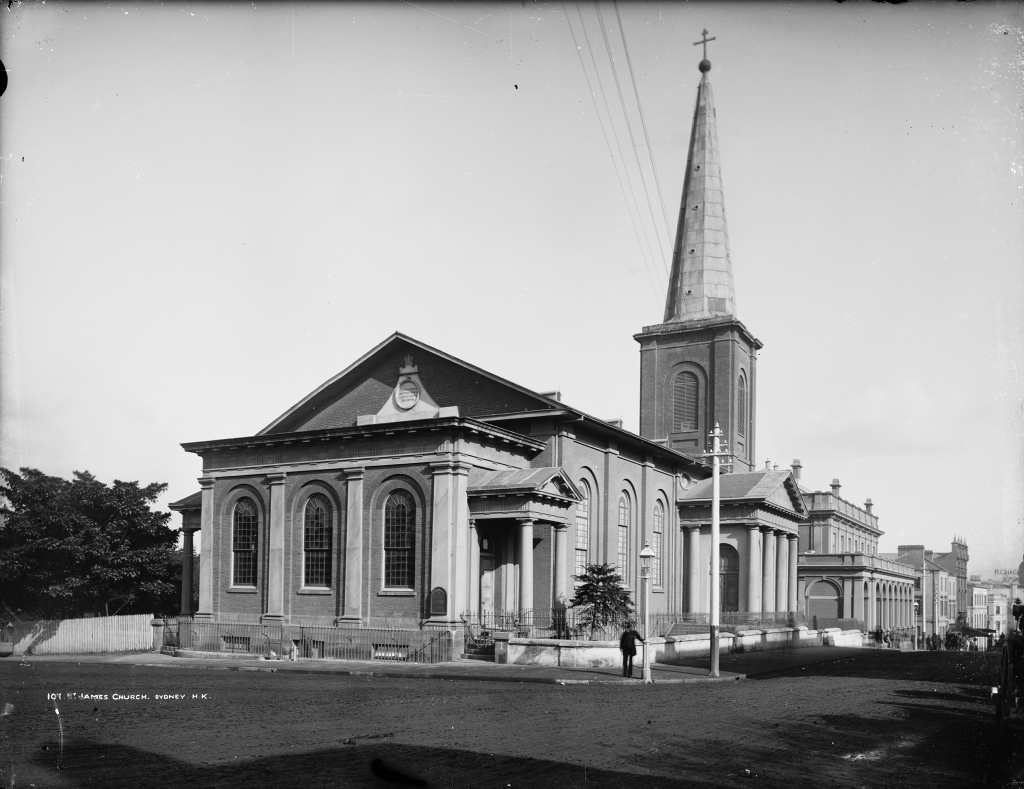






.jpg)

.jpg)
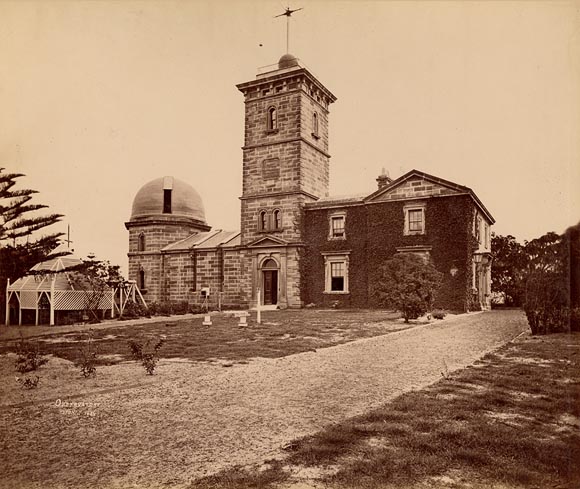



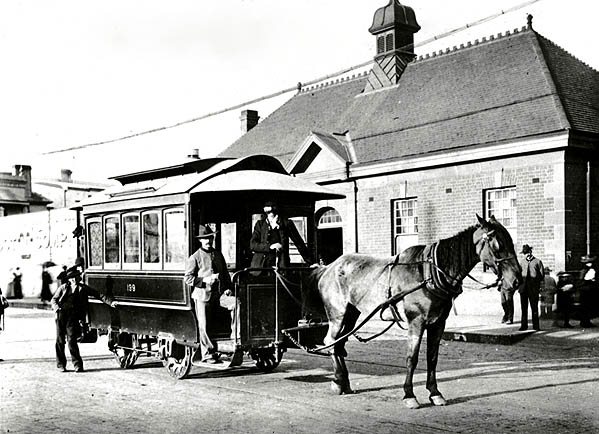





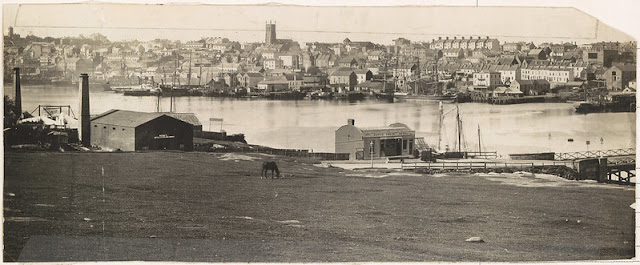




_(cropped).jpg)








.jpg)



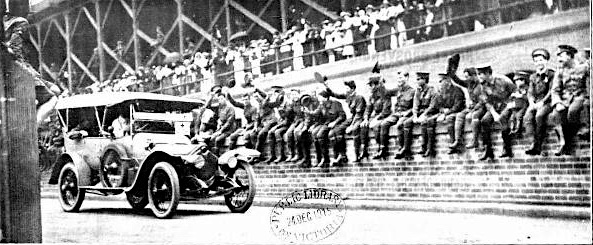

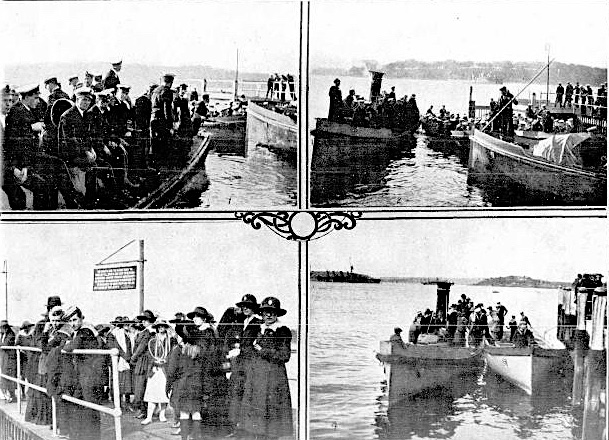

.jpg)
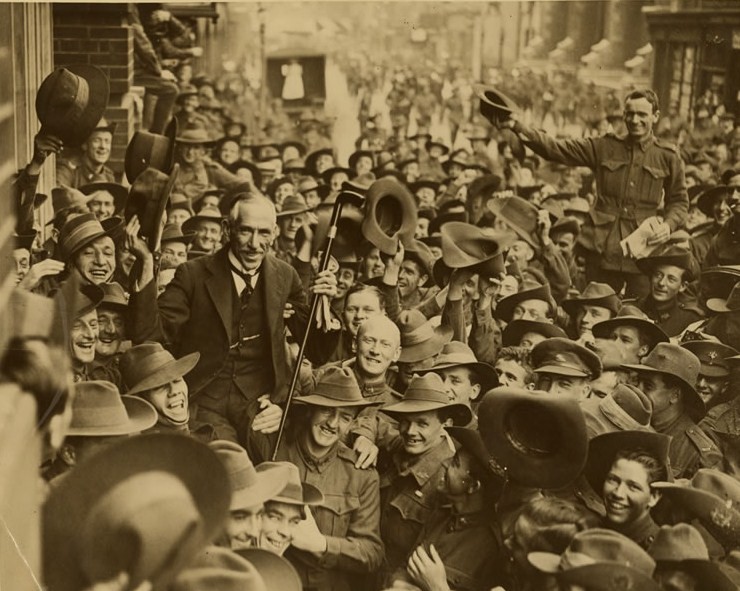

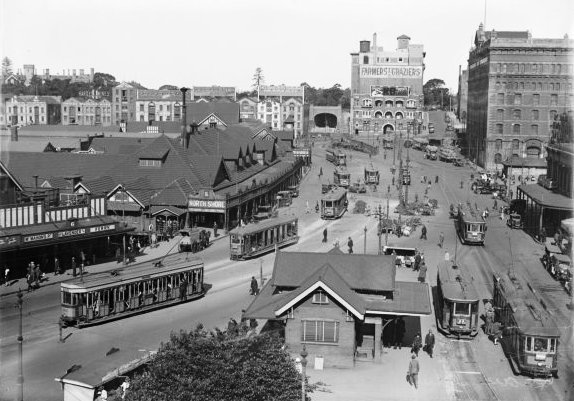




.jpg)




.jpg)
_(6310661386).jpg)



%2C_1933-1942_(15806644966).jpg)







_(2).jpg)

.jpg)








Commercial_Banking_Company_George_Street.jpg)

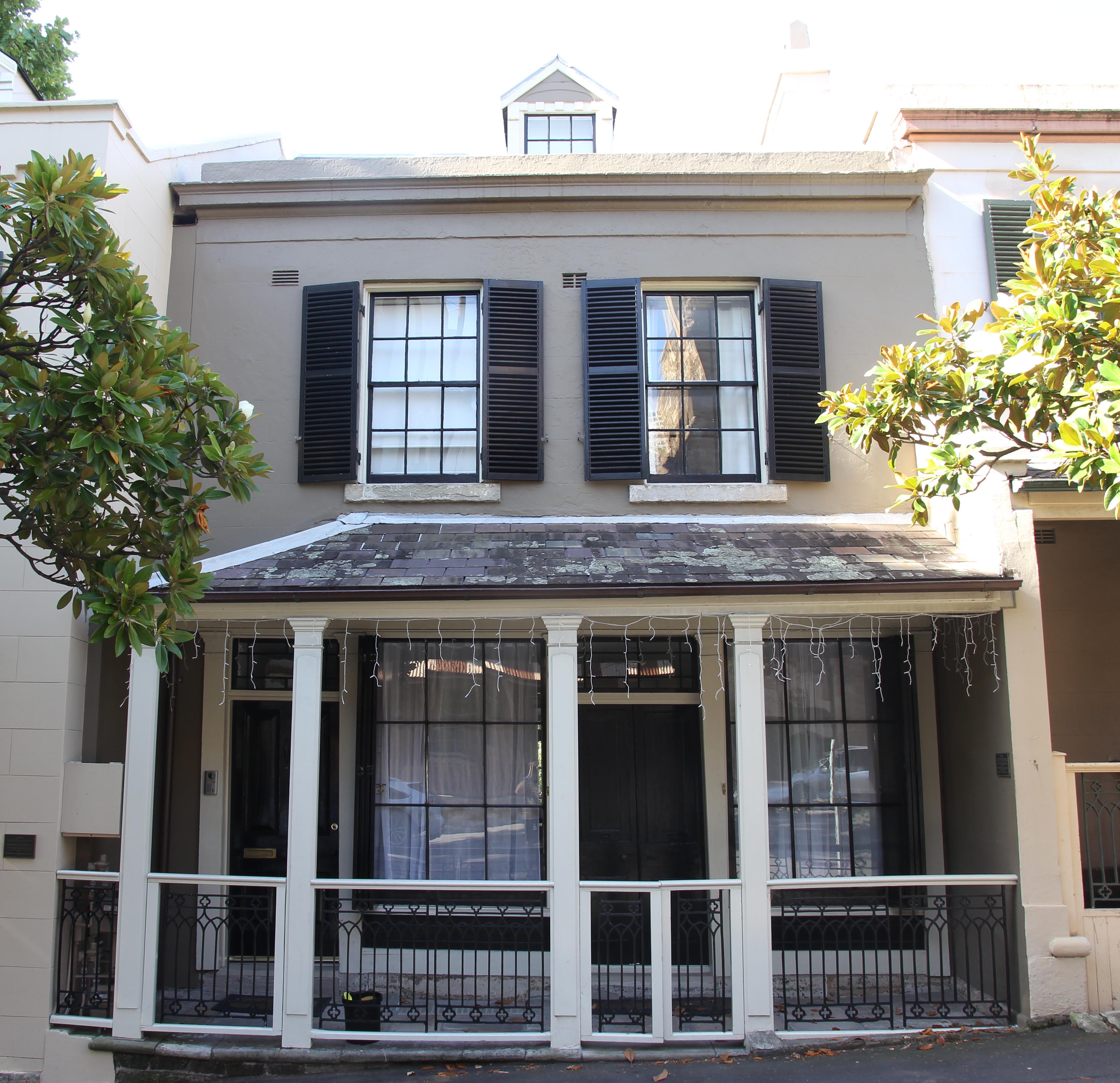




Police_Courts_Sydney-1.jpg)

Waimea_in_Waimea_Avenue_Woollahra.jpg)

Pitt_St_Uniting_Church-4.jpg)
_-_Sydney%2C_NSW_(7889991666).jpg)
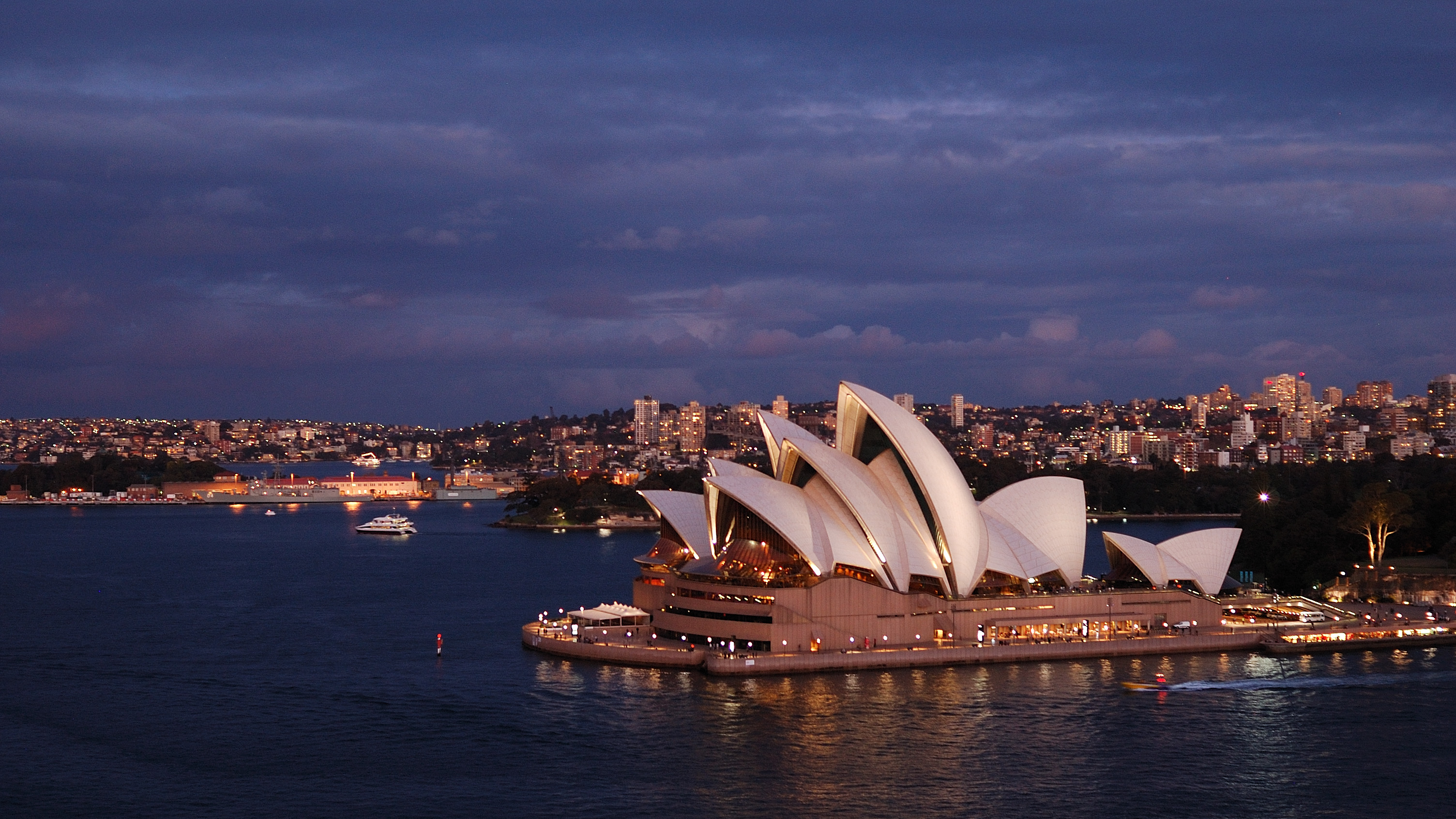

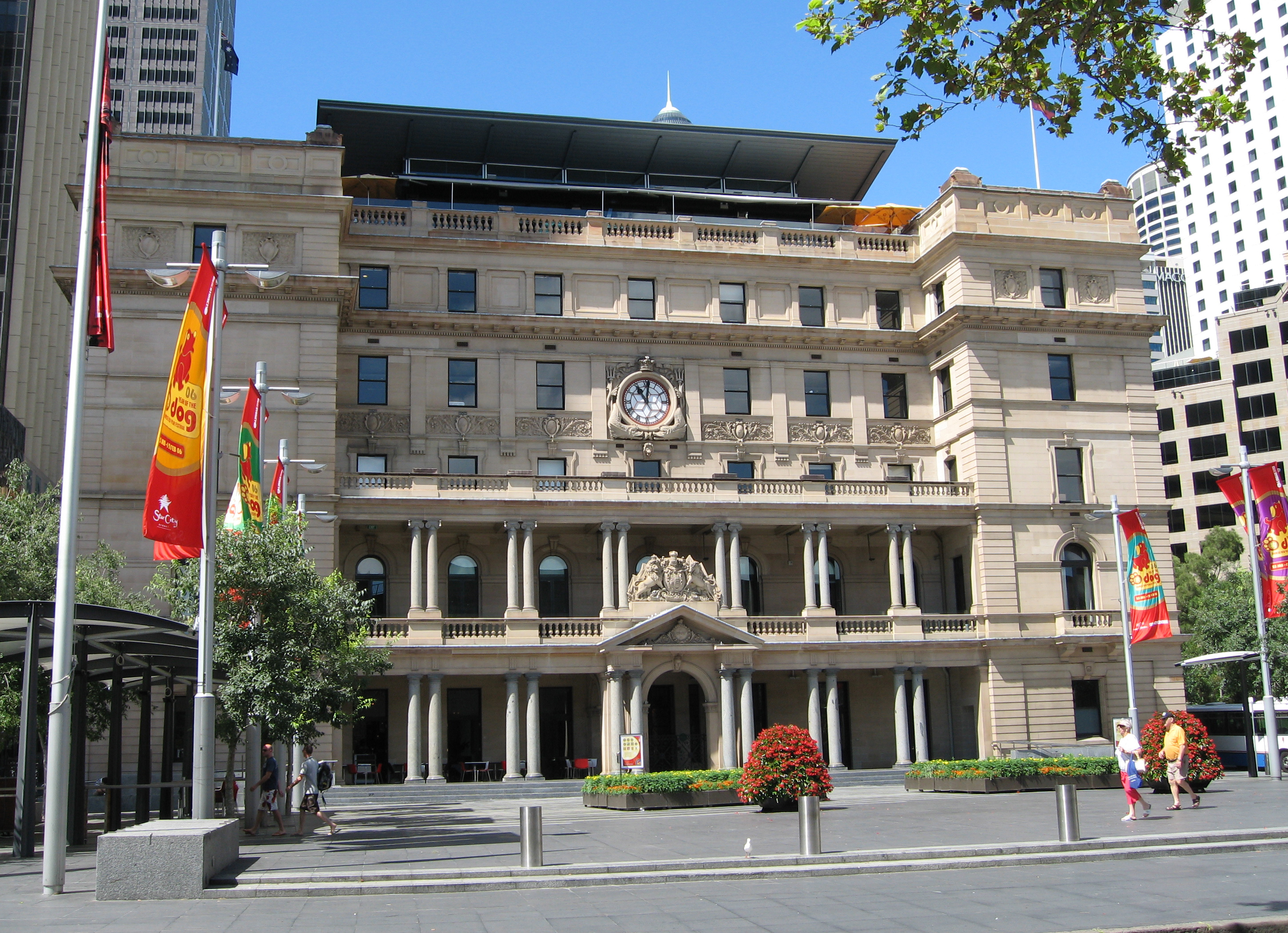
Bank_of_NSW_Broadway_Sydney-4.jpg)







cottage_Oxford_Street-1.jpg)

.jpg)

Ritz_Cinema.jpg)